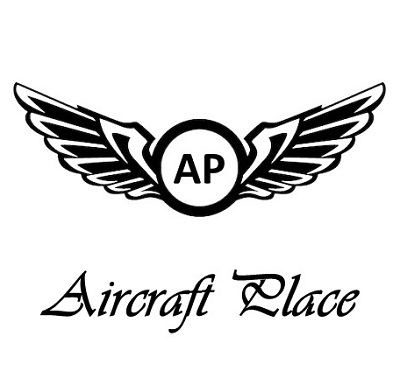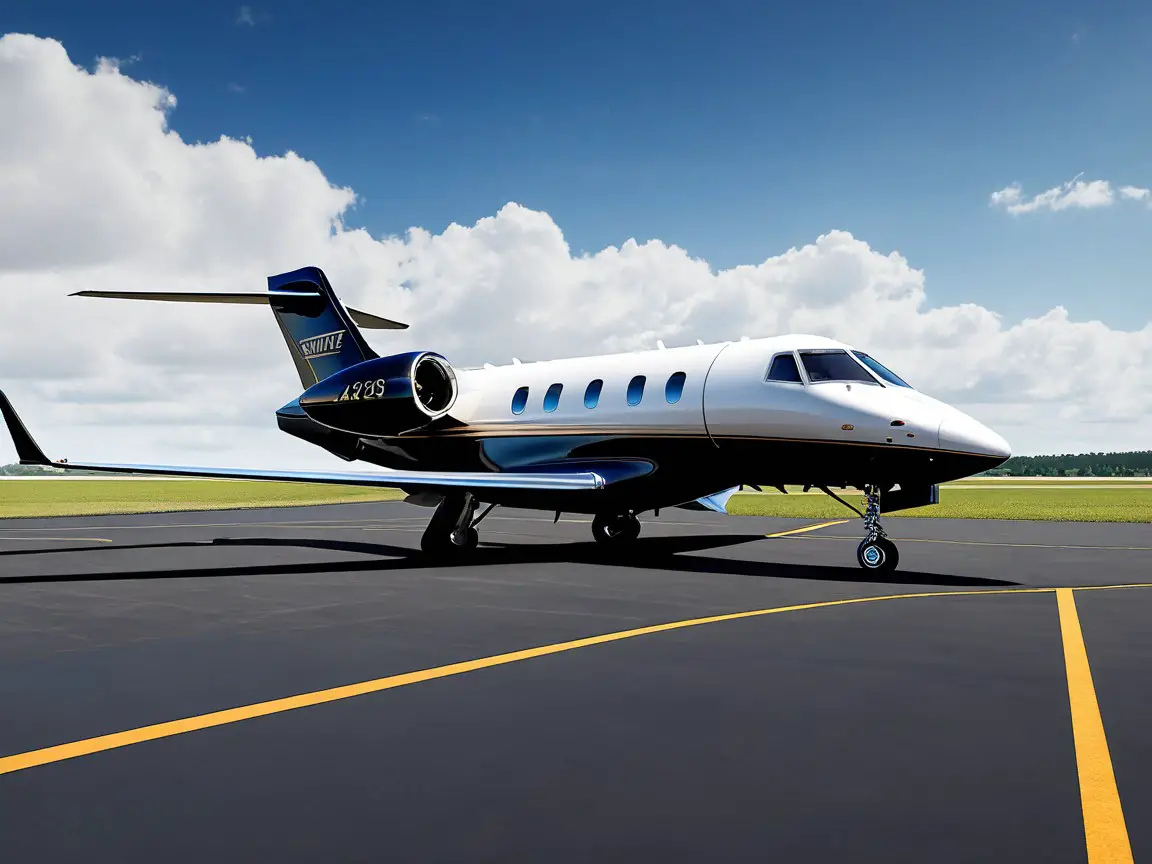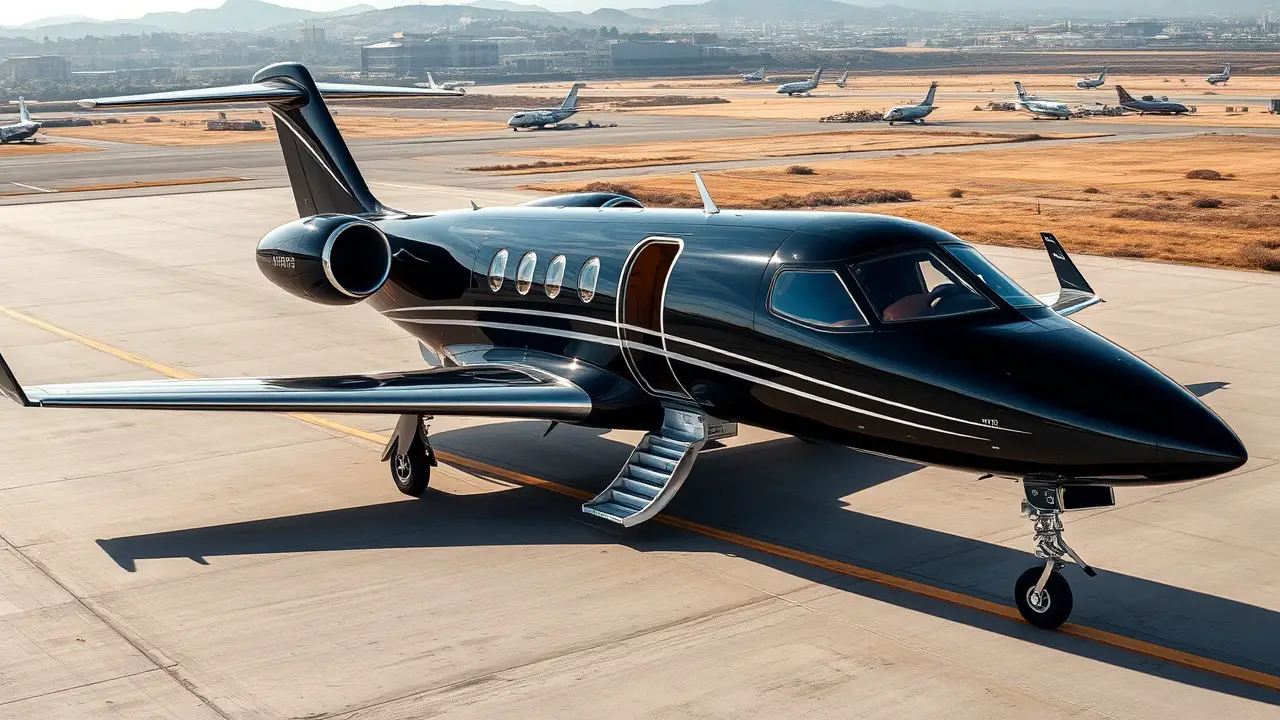Private jet maintenance cost: Have you ever wondered about the financial implications of owning a private jet? Sure, it’s a symbol of luxury and prestige, but have you considered the hidden costs associated with its maintenance?
Well, buckle up because we’re about to take a closer look at private jet maintenance costs and why they are an essential consideration for any aspiring jet owner.
Private jet maintenance cost refers to the expenses incurred for ensuring the safe and efficient operation of a private jet.
It includes routine inspections, repairs, component replacements, and compliance with regulatory standards.
The average annual cost can range from $300,000 to $1 million, depending on the size, type, and age of the aircraft.
Owning a private jet comes with undeniable perks: unparalleled convenience, flexibility in travel plans, and the ability to reach destinations that commercial airlines may not serve.
However, it also entails significant financial responsibilities. While the initial purchase price of a private jet might seem daunting enough, it’s just the tip of the iceberg.
Maintenance costs can be a real eye-opener for those venturing into private aviation.
Unlike commercial aircraft that follow strict maintenance schedules set by regulatory authorities, private jets require meticulous attention to detail and regular upkeep.
From routine inspections to engine overhauls and avionics upgrades, every aspect demands diligent care – all at your expense.
Understanding the expenses of owning a private jet is crucial for prospective owners who want to make informed decisions about their plane.
Regular maintenance and inspections are necessary to ensure the plane’s safety and performance throughout the year, preventing unexpected financial burdens.
We’ll explore how private jet maintenance cost and private jet fuel cost can vary depending on factors such as aircraft type, usage patterns, and geographical location.
So fasten your seatbelts as we navigate through this complex world of maintaining your very own flying machine! Additionally, we’ll discuss the benefits of private jet charter.
Factors Affecting Private Jet Maintenance Costs
Aircraft age and usage are significant factors that can greatly influence private jet maintenance costs.
As an aircraft gets older, it requires more frequent inspections, repairs, and component replacements to ensure its continued airworthiness.
This is because wear and tear naturally occur over time, affecting the performance and reliability of various systems.
The number of flight hours logged by a private jet also plays a crucial role in determining maintenance expenses.
The more an aircraft is used, the more frequently it will need routine checks and servicing. Heavy usage can accelerate the deterioration of critical components such as engines, avionics systems, landing gear, and airframes.
For instance, consider two private jets: one with 500 flight hours per year and another with 1,000 flight hours per year.
The latter will likely have higher maintenance costs due to increased wear on various parts caused by double the flight time.
Similarly, an older aircraft that has accumulated a substantial number of flight hours will require more extensive inspections and potentially expensive repairs to maintain its airworthiness.
The Role of Manufacturer Recommendations in Determining Maintenance Costs
Manufacturer recommendations significantly impact private plane maintenance costs. Aircraft manufacturers provide detailed guidelines regarding plane inspection intervals.
Service bulletins, mandatory upgrades or modifications, and recommended replacement schedules for plane components.
Following these manufacturer recommendations is crucial for maintaining compliance with safety regulations in the private jet charter industry while ensuring optimal performance and longevity of the plane.
Deviating from these guidelines may result in increased risk or voided warranties, and can also impact private jet maintenance cost and private jet fuel cost.
Failure to adhere to manufacturer recommendations for plane maintenance can lead to costly consequences down the line.
For example, neglecting an engine overhaul at the recommended interval could result in reduced fuel efficiency or even catastrophic engine failure.
By following plane manufacturer guidelines diligently, plane owners can minimize unexpected breakdowns while optimizing their investment in private jet maintenance.
Exploring the Influence of Aircraft Complexity on Maintenance Expenses
The complexity of an aircraft is another crucial factor that affects private jet maintenance costs.
Modern private jets are equipped with advanced avionics systems, sophisticated engines, and intricate structures, all of which contribute to increased complexity.
The more complex an aircraft is, the more specialized knowledge and skills are required for its maintenance.
This often translates into higher labor costs as technicians need to undergo extensive training and possess specific certifications to work on complex systems.
Moreover, complex aircraft typically have a larger number of components that may require regular inspections or replacements.
Each additional system or component increases the overall maintenance workload and associated expenses.
For instance, consider a basic single-engine private jet compared to a large business jet with multiple engines, advanced flight management systems, and cutting-edge navigation equipment.
The latter will undoubtedly have higher maintenance costs due to the increased complexity involved in maintaining its various systems.
The True Cost of Owning and Maintaining a Private Jet
Owning a private jet is undoubtedly a symbol of luxury and prestige, but it also comes with a hefty price tag.
When considering the cost of owning and maintaining a private jet, it’s important to look beyond the initial purchase price.
There are ongoing costs that can quickly add up, making it essential to have a clear understanding of what you’re getting into financially.
One of the most significant expenses associated with owning a private jet is maintenance costs.
While routine inspections and repairs are part of this equation, there’s much more to consider.
Private jets require regular servicing to ensure they remain in optimal condition for safe operation.
This includes everything from engine overhauls to avionics upgrades, which can be quite costly.
In addition to maintenance, there are various other ongoing expenses that need to be factored in when calculating the true cost of ownership.
These include operating costs such as fuel, insurance fees, hangar costs, crew salaries, and more.
Each hour spent in the air adds dollars to your overall expenditure, making it important to carefully analyze your flying habits and budget accordingly.
Understanding that maintenance costs go beyond routine inspections and repairs.
When people think about private jet maintenance costs, they often envision routine inspections and minor repairs.
However, the reality is that aircraft maintenance goes far beyond these basic tasks.
To keep your private jet in top-notch condition and ensure its longevity, you’ll need to invest in regular check-ups by certified mechanics who specialize in aircraft servicing.
Private aircraft engines are one area where substantial expenses can arise.
Over time, private aircraft engines may require major overhauls or even replacement depending on usage and manufacturer recommendations.
These procedures involve meticulous work carried out by skilled technicians who meticulously examine every private aircraft engine component for signs of wear or potential issues.
Avionics systems also play a crucial role in the operation of private jets. These systems include navigation, communication, and flight control equipment.
As technology advances, it’s important to keep your avionics up to date for safety and efficiency purposes.
Upgrading or replacing these systems can be a significant expense that should not be overlooked when calculating maintenance costs.
Highlighting the financial commitment required for long-term ownership.
Owning a private jet is not just about the initial purchase; it’s a long-term financial commitment.
While some may assume that once you’ve acquired the aircraft, there are no further expenses, this couldn’t be further from the truth.
The ongoing costs associated with owning and maintaining a private jet can quickly add up over time.
Hangar costs are one such expense that owners need to consider.
Private jets require secure storage when not in use to protect them from weather elements and potential damage.
Renting or owning a hangar can come with substantial monthly fees, depending on location and size.
Another factor to consider is crew salaries if you choose to employ pilots and other staff members for your private jet.
Hiring qualified professionals who meet industry standards comes at a price, as their expertise ensures safe operation and compliance with regulations.
Understanding Fractional Jet Ownership: Maintenance and Cost Considerations
Fractional jet ownership offers individuals the opportunity to enjoy the benefits of private jet travel without bearing the full financial burden.
This shared ownership model also impacts how responsibilities are divided among co-owners.
Rather than solely shouldering the entire cost and effort of maintenance, fractional owners have the advantage of spreading these obligations across a group.
By pooling resources with other co-owners, fractional private aircraft owners can benefit from cost-sharing arrangements for routine upkeep.
This means that expenses related to regular inspections, scheduled maintenance, and minor repairs for private aircraft are divided among all shareholders in proportion to their ownership stake.
Such an arrangement not only reduces individual costs but also ensures that necessary maintenance is carried out promptly and professionally for private aircraft.
However, it’s important to note that while fractional ownership allows for shared maintenance responsibilities, major repairs or overhauls may still require additional financial contributions from each owner.
These larger-scale projects typically fall outside routine upkeep and may demand a more substantial investment from each shareholder.
Coordinating Maintenance Schedules: Potential Challenges
One aspect of fractional jet ownership that requires careful consideration is coordinating maintenance schedules among co-owners.
While sharing costs is advantageous, aligning everyone’s availability for inspections or repairs can be challenging due to conflicting personal schedules or business commitments.
To mitigate potential scheduling conflicts, effective communication and planning are crucial.
Fractional owners must establish clear channels of communication with one another and develop a system for organizing maintenance activities.
Regular meetings or online platforms can facilitate discussions regarding upcoming inspections or required repairs.
Engaging professional management services can help streamline the coordination process by centralizing communications and ensuring timely execution of necessary maintenance tasks.
These service providers specialize in managing shared aircrafts and possess the expertise required to handle scheduling complexities efficiently.
Moreover, open dialogue between fractional owners is essential.
Establishing a protocol for reporting and resolving maintenance emergencies can help prevent delays and minimize disruptions to travel plans.
Analyzing the Overall Cost of Purchasing Different Types of Private Jets
Private jets come in a wide range of models, each with its own unique features and capabilities.One of the most crucial factors to consider is the price tag.
The cost of buying a private jet can vary significantly depending on several factors, including the size, age, and manufacturer.
Let’s take a closer look at some popular private jet models and their average purchase prices:
Cessna Citation Mustang:
-
Average Purchase Price: $2-3 million
-
-
-
Average Purchase Price: $65 million
-
Bombardier Global 6000:
-
Average Purchase Price: $45 million
-
Embraer Phenom 300:
-
Average Purchase Price: $9-10 million
-
As you can see, there is a substantial difference in prices between these different types of private jets.
It’s essential to consider your budget and requirements when deciding which model best suits your needs.
Highlighting differences in ongoing maintenance costs based on aircraft models
While the initial purchase price is a significant consideration, it’s equally important to factor in the ongoing maintenance costs associated with owning a private jet.
The type of aircraft plays a crucial role in determining these expenses.
Here are some examples of average annual maintenance costs for different types of private jets:
Cessna Citation Mustang:
-
Annual Maintenance Cost: $200,000-$250,000
-
Gulfstream G650:
-
Annual Maintenance Cost: $2-3 million
-
Bombardier Global 6000:
-
Annual Maintenance Cost: $1-1.5 million
-
Embraer Phenom 300:
-
Annual Maintenance Cost: $400,000-$500,000
-
As you can see, the ongoing maintenance costs can vary significantly depending on the aircraft model.
Factors such as the complexity of systems, availability of spare parts, and specialized labor required for inspections and repairs contribute to these variations.
Examining how market demand affects pricing variations
Another crucial aspect that influences the cost of purchasing different types of private jets is market demand. The law of supply and demand comes into play in this industry as well.
When a particular aircraft model experiences high demand, its price tends to increase. On the other hand, if there is low demand or an oversupply of a specific type of private jet, prices may be more negotiable.
For example:
-
In recent years, there has been high demand for Gulfstream G650 due to its exceptional performance capabilities and luxurious features. This increased demand has led to higher purchase prices.
-
Conversely, older models with limited capabilities might have lower prices due to reduced market demand.
It’s essential to keep an eye on market trends and consult with aviation experts who can provide insights into current pricing dynamics before making a purchase decision.
Evaluating Fuel Efficiency and its Impact on Private Jet Maintenance Costs
Fuel efficiency plays a crucial role in determining the overall operating expenses of private jets.
By understanding how fuel efficiency can contribute to lower costs over time, jet owners can make informed decisions that benefit their bottom line.
Efficient engines are designed to consume less fuel while still delivering optimal performance.
This not only saves money on costly jet fuel but also reduces the wear and tear on various components of the aircraft.
When engines burn fuel more efficiently, they generate less heat and experience fewer mechanical stresses, resulting in lower repair costs.
In addition to direct savings on fuel consumption, improved fuel efficiency indirectly affects maintenance costs by reducing the frequency of certain maintenance tasks.
For example, when engines run efficiently, they produce fewer harmful emissions that can accumulate as deposits within the engine and other vital systems.
As a result, maintenance intervals for cleaning or replacing parts may be extended, saving both time and money.
Correlation between Fuel Consumption Rates and Maintenance Expenditures
The correlation between fuel consumption rates and overall maintenance expenditures is an essential factor to consider when evaluating private jet maintenance costs.
The amount of fuel consumed directly impacts various aspects of aircraft upkeep.
Higher fuel consumption rates often lead to increased wear and tear on engine components such as turbines, compressors, and combustion chambers.
These parts undergo significant stress during operation and require regular inspections, repairs, or replacements.
Consequently, higher levels of engine usage due to inefficient fuel consumption can significantly contribute to elevated maintenance expenditures.
Furthermore, excessive fuel consumption can also impact auxiliary systems within the aircraft.
For instance, avionics systems that rely on electrical power generated by the engines may experience greater strain if more power is needed due to inefficiencies in burning jet fuel.
By prioritizing fuel efficiency in private jet operations, owners can effectively reduce their long-term maintenance costs while ensuring optimal performance throughout the lifespan of their aircraft.
The Role of Fuel Costs in Maintenance Expenses
Private jet fuel costs play a significant role in determining maintenance expenses.
As the price of jet fuel fluctuates, it directly affects the overall operating budget and maintenance allocations for private jet owners.
When fuel costs rise, it puts additional financial pressure on aircraft operators.
Higher fuel prices mean more substantial expenses for every flight, which can impact the available budget for regular maintenance activities.
In such cases, owners may be forced to prioritize essential repairs over routine inspections or preventive measures, potentially compromising the long-term health of their aircraft.
Some airports charge fees based on the amount of fuel purchased by private jets during refueling. These fees are often calculated as a percentage of the total fuel cost.
Consequently, higher consumption rates due to inefficiencies can result in increased fees at certain airports, further adding to the overall maintenance expenditures.
By carefully evaluating and optimizing fuel efficiency while considering fluctuating fuel costs and associated fee.
Private jet owners can effectively manage their maintenance expenses and ensure the longevity of their valuable assets.
Maximizing Range and Reducing Costs: Fuel Efficiency in Private Jets
Private jet owners and operators are constantly seeking ways to maximize their aircraft’s range while minimizing costs.
One of the most effective strategies is to focus on optimizing fuel efficiency.
By implementing various techniques, private jet owners can extend their flight ranges, reduce the number of refueling stops, and ultimately save significant amounts of money on fuel expenses.
1. Proper aircraft maintenance
Maintaining private jets in optimal condition is crucial for achieving maximum fuel efficiency.
Regular inspections, engine tune-ups, and adherence to manufacturer-recommended maintenance schedules ensure that all components are functioning at their best.
Clean air filters, properly inflated tires, and well-lubricated parts contribute to smoother operations and reduced fuel consumption.
2. Upgrading to modern technology
Technological advancements have revolutionized the aviation industry, leading to improved fuel economy in private jets.
Investing in state-of-the-art avionics systems can enhance flight planning capabilities by optimizing routes based on wind patterns and weather conditions.
Advanced engine designs and lightweight materials help reduce overall aircraft weight, resulting in increased fuel efficiency.
3. Efficient flight planning
Careful flight planning plays a vital role in maximizing range while minimizing costs.
By considering factors such as wind direction, altitude optimization, and selecting the most direct routes between destinations, pilots can significantly reduce the amount of fuel consumed during each flight.
Utilizing sophisticated navigation systems that provide real-time weather updates further assists pilots in making informed decisions for optimal fuel efficiency.
Discussing technological advancements that enhance fuel economy in private jets
In recent years, significant strides have been made towards improving fuel economy in private jets through innovative technologies specifically designed to enhance performance while reducing costs.
1. Winglets for enhanced aerodynamics
Winglets are vertical extensions added at the tips of an aircraft’s wings. These aerodynamic devices reduce drag and improve fuel efficiency by minimizing the effects of wingtip vortices, which are created as air flows around the wing.
By decreasing drag, winglets enable private jets to fly more efficiently, resulting in reduced fuel consumption.
2. Advanced engine designs
Modern private jet engines incorporate cutting-edge technologies that optimize fuel burn rates while maintaining high levels of performance.
High-bypass turbofan engines, for example, offer improved fuel efficiency by redirecting a significant portion of the incoming airflow around the engine core. This design reduces fuel consumption without compromising on power output.
3. Lightweight materials and construction techniques
Advancements in materials science have led to the development of lightweight composites and alloys that are stronger and more durable than traditional materials used in aircraft construction.
By utilizing these lightweight materials, private jet manufacturers can reduce an aircraft’s weight, resulting in improved fuel efficiency and extended flight ranges.
Highlighting cost-saving benefits associated with reduced refueling stops
Reducing the number of refueling stops required during a trip can lead to substantial cost savings for private jet owners and operators. Here are some key benefits:
1. Time savings
Every refueling stop adds time to a journey, including ground handling procedures such as refueling itself. By minimizing refueling stops, private jet operators can save valuable time for both passengers and crew members.
This allows for more efficient travel plans and increased productivity during trips.
2. Lower operational expenses
Each additional refueling stop incurs costs such as landing fees, handling charges, and taxes at airports along the route. By reducing these stops, private jet owners can significantly decrease their operational expenses over time.
3. Enhanced passenger comfort
Refueling stops often require passengers to disembark temporarily while the aircraft is serviced. Minimizing these interruptions provides a smoother travel experience with fewer disruptions for passengers onboard.
Exploring the Benefits of Jet Management for Fractional Ownership: Cost and Convenience
-
Professional jet management services can greatly streamline maintenance processes for fractional owners. -Maintenance is a crucial aspect that requires expertise and attention to detail.
-
By entrusting the responsibility of maintenance to a reputable management company, fractional owners can focus on enjoying their investment without the stress of handling complex maintenance logistics.
-
These management services have established relationships with top-notch vendors and suppliers, ensuring prompt and efficient servicing of the aircraft.
-
The management company takes care of scheduling routine inspections, adhering to manufacturer-recommended service intervals, and addressing any issues that may arise during regular use.
-
With their extensive knowledge and experience in private jet maintenance, these professionals ensure that all necessary repairs are carried out promptly to keep the aircraft in optimal condition.
Convenience for Fractional Owners
-
One of the significant benefits of utilizing jet management services is the convenience it offers to fractional owners.
-
Owning a private jet comes with various responsibilities, including managing insurance, complying with regulations, coordinating crew schedules, and arranging charter revenue when not using the aircraft personally.
-
A management company takes care of these time-consuming tasks on behalf of the owner. They handle insurance matters, ensuring adequate coverage at competitive rates while navigating complex policies specific to private aviation.
-
They manage crew schedules efficiently so that pilots are available when needed. This eliminates the burden on fractional owners who would otherwise have to coordinate crew rotations themselves.
-
Furthermore, when an owner decides to generate revenue by chartering out their aircraft during periods of non-use, a management company can handle all aspects related to marketing and booking charters. This allows owners to enjoy financial benefits without getting involved in administrative hassles.
Cost-Saving Advantages through Bulk Purchasing and Vendor Relationships
-
Another compelling reason why jet management makes financial sense for fractional owners is the cost-saving advantages it offers.
-
Management companies often have established relationships with vendors and suppliers, allowing them to negotiate better prices for parts, components, and maintenance services.
-
By leveraging these relationships and engaging in bulk purchasing, management companies can pass on significant savings to fractional owners.
-
For example,The management company can pool multiple aircraft under their management to negotiate discounted rates from maintenance facilities. This results in substantial cost savings compared to individual owners arranging maintenance independently.
-
Furthermore, these companies have a deep understanding of the industry’s best practices and can recommend cost-effective solutions without compromising safety or quality. They ensure that all expenses related to maintenance are transparently communicated to fractional owners.
The Role of Jet Management in Minimizing Private Jet Maintenance Costs
Regular inspections and preventative maintenance play a crucial role in minimizing private jet maintenance costs.
By staying on top of routine checks and addressing any potential issues early on, jet management teams can help avoid costly repairs down the line.
Prevention is key. Investing time and resources into regular inspections allows experts to identify any underlying problems before they escalate into major issues.
By conducting thorough examinations of various components such as engines, avionics systems, and airframes, jet management teams can detect potential failures or malfunctions that may not be immediately apparent.
Preventative maintenance also involves adhering to manufacturer-recommended service intervals for different parts of the aircraft.
This proactive approach ensures that all components are functioning optimally, reducing the risk of unexpected breakdowns or accidents during flights.
Furthermore, by keeping up with routine inspections and maintenance tasks, you’ll likely extend the lifespan of your private jet.
Regularly servicing engines, replacing worn-out parts, and ensuring proper lubrication can prevent premature wear and tear.
This not only saves you money on expensive repairs but also helps maintain your aircraft’s value over time.
The Expertise of Jet Management Teams: Identifying Issues Before They Escalate
One significant advantage of partnering with a jet management team is their expertise in identifying potential issues early on.
These professionals possess an in-depth understanding of private jets’ intricate systems and have extensive experience dealing with various maintenance challenges.
Jet management teams employ highly skilled technicians who are trained to spot even the slightest signs of trouble during inspections.
Their keen eye for detail allows them to catch problems that might go unnoticed by someone without specialized knowledge.
By leveraging their expertise, these teams can promptly address emerging issues before they develop into more complex problems that require costly repairs or part replacements.
Their ability to diagnose and resolve maintenance concerns efficiently helps minimize downtime and keeps your private jet in optimal condition.
Proactive Maintenance Planning: Minimizing Unexpected Costs
Proactive maintenance planning is another effective strategy for minimizing unexpected costs associated with private jet maintenance.
By implementing a comprehensive maintenance schedule, jet management teams can anticipate and address potential issues before they become major headaches.
A proactive approach involves carefully planning inspections, routine servicing, and component replacements based on manufacturer recommendations and industry best practices.
This ensures that each aspect of your aircraft receives the attention it needs at the appropriate time. Proactive planning allows for better budgeting and cost control.
By staying ahead of maintenance requirements, you can allocate funds more effectively, avoiding sudden financial burdens associated with emergency repairs or unplanned part replacements.
Moreover, regular communication between jet owners and management teams is crucial for successful proactive maintenance planning. Open lines of dialogue enable both parties to discuss any concerns or observations promptly.
This collaborative approach fosters a proactive mindset towards maintenance and helps build a strong working relationship between all stakeholders involved.
Comparing the Costs of Purchasing and Maintaining Different Types of Private Jets
Private jets are the epitome of luxury travel, offering unparalleled comfort and convenience. However, before diving into the world of private jet ownership, it’s crucial to understand the costs involved.
There is a wide range of options available in the market. From light jets to midsize jets, super-midsize jets, and beyond, each category has its own unique characteristics and associated costs.
The price of a private jet can vary significantly depending on factors such as aircraft age, condition, avionics upgrades, cabin amenities, and overall market demand.
For budget-conscious buyers seeking affordable options without compromising on quality or safety standards, light jets can be an excellent choice.
These smaller aircraft typically have lower purchase prices compared to their larger counterparts.
A well-maintained pre-owned light jet can range anywhere from $2 million to $10 million. Midsize jets offer a step up in terms of cabin space and range capabilities.
While they come with higher price tags than light jets, they still provide good value for money when considering factors like passenger capacity and operational efficiency.
Expect to pay between $8 million to $25 million for a midsize private jet.
Stepping into the realm of super-midsize jets introduces even more luxurious features and increased performance capabilities. These aircraft are ideal for longer flights or those requiring additional passenger capacity.
The purchase prices for super-midsize private jets typically start around $15 million and can go upwards of $40 million.
For those looking for ultimate luxury and long-range capabilities, large-cabin or heavy jets are worth exploring despite their higher costs.
These spacious aircraft offer extensive customization options and can accommodate larger groups of passengers comfortably.
The price range for large-cabin private jets varies greatly, starting from $25 million and reaching well over $100 million for the most advanced models.
Discussing Factors That Contribute to Variations in Ownership Costs Between Different Aircraft Types
When considering private jet ownership, it’s essential to factor in ongoing maintenance expenses. While the purchase price is a significant investment, the cost of maintaining your aircraft can have a substantial impact on your overall budget.
Several factors contribute to variations in ownership costs between different aircraft types. One crucial aspect that affects maintenance costs is the age and condition of the aircraft.
Older jets generally require more frequent inspections, repairs, and upgrades to meet FAA regulations and maintain optimal performance.
Newer models may have lower maintenance expenses initially but could incur higher costs as they age.
Another factor influencing maintenance costs is the availability of spare parts and technicians familiar with specific aircraft types.
More popular models often benefit from a larger market presence, resulting in easier access to affordable parts and experienced mechanics.
On the other hand, rarer or older aircraft may face challenges when sourcing components or finding skilled professionals for repairs. The complexity of avionics systems also plays a role in determining maintenance expenses.
Advanced technologies such as glass cockpits, integrated flight management systems, and enhanced navigation equipment require specialized training and expertise for troubleshooting and repairs.
Consequently, these sophisticated systems can drive up maintenance costs compared to simpler avionics found in older aircraft.
Operational factors like flight hours, utilization rates, and geographical location impact ongoing maintenance expenses.
Regular inspections are necessary to ensure airworthiness and compliance with safety regulations set by aviation authorities like the FAA.
Moreover, flying frequently or operating in harsh environments may lead to increased wear-and-tear on various components of the aircraft.
Highlighting Considerations for Budget-Conscious Buyers Seeking Affordable Options
While owning a private jet undoubtedly comes with significant financial commitments, there are ways to minimize costs and make ownership more affordable.
For budget-conscious buyers, considering the following options and strategies can help ensure a more cost-effective private jet experience:
-
Pre-owned Aircraft: Purchasing a well-maintained pre-owned aircraft can offer substantial savings compared to buying brand new. However, it’s crucial to conduct thorough inspections and assessments of the aircraft’s condition before finalizing any purchase.
-
Leasing or Fractional Ownership: Instead of outright purchasing a private jet, exploring leasing or fractional ownership programs can provide access to private aviation without the full financial burden of ownership. These options allow individuals or businesses to enjoy the benefits of private jet travel while sharing costs with other participants.
Saving Money on Private Jet Ownership: Key Factors to Consider
One effective strategy for reducing private jet ownership costs is by negotiating service contracts. By working closely with maintenance providers, owners can secure more favorable terms and pricing.
This could involve bundling multiple services together or committing to a long-term contract in exchange for discounted rates.
Owners can explore the option of including routine maintenance as part of the contract, ensuring regular upkeep without incurring additional expenses.
Negotiating service contracts not only helps save money but also provides peace of mind knowing that maintenance needs are covered.
With a well-structured agreement in place, owners can budget more accurately and avoid unexpected costs associated with ad hoc repairs or unscheduled maintenance.
Exploring Shared Ownership
Shared ownership is another avenue to consider when aiming to reduce private jet ownership costs. This arrangement allows multiple individuals or companies to share the financial responsibility and usage rights of an aircraft.
By splitting expenses among co-owners, the overall burden becomes more manageable.
Shared ownership offers several benefits beyond cost savings. It enables owners to access a larger fleet of aircraft options while still enjoying the advantages of private travel.
Moreover, shared ownership often includes professional management services that oversee maintenance schedules and ensure compliance with safety regulations.
Leasing Options
Opting for leasing instead of outright purchase is another way to minimize private jet ownership costs.
Leasing allows individuals or businesses to enjoy the benefits of owning a private jet without the significant upfront investment and ongoing maintenance expenses.
Leasing agreements typically cover both short-term and long-term options, providing flexibility based on individual needs.
Short-term leases are ideal for occasional travel requirements, while long-term leases offer extended periods of exclusive use at a reduced rate compared to full ownership.
It’s important to carefully evaluate lease terms before committing to an agreement.
Understanding factors such as lease duration, monthly fees, insurance coverage, and maintenance responsibilities will help determine if leasing is the most cost-effective solution for private jet ownership.
Proper Planning and Research
Proper planning and thorough research are key components in achieving significant savings on private jet ownership.
By investing time upfront to understand the market, compare options, and assess individual requirements, owners can make informed decisions that align with their budgetary constraints.
Researching different aircraft models and their associated maintenance costs can help identify options that offer better value for money.
Understanding the specific maintenance needs of each aircraft type allows owners to anticipate expenses accurately.
Planning ahead also involves creating a comprehensive budget that includes all aspects of ownership, from routine inspections to major repairs.
By accounting for these costs in advance, owners can avoid financial surprises down the line and ensure they have sufficient funds allocated for ongoing maintenance.
Calculating the True Cost of Private Jet Maintenance
Step-by-Step Approach to Accurately Estimate Private Jet Maintenance Expenses
-
Routine Inspections: Regular inspections are crucial for ensuring the safety and airworthiness of a private jet. These inspections involve thorough checks of various components, systems, and structures to identify any potential issues or wear and tear. Depending on the aircraft type and usage, routine inspections can be scheduled annually, semi-annually, or even more frequently. The cost of these inspections will vary based on the complexity of the aircraft and the extent of work required.
-
Repairs: Repairs are an inevitable part of private jet maintenance. Whether it’s fixing a malfunctioning system or replacing damaged parts, repairs can significantly impact maintenance costs. The expense will depend on factors such as the severity of the issue, availability of spare parts, labor fees, and any additional services required during the repair process.
-
Engine Overhauls: Engines are among the most critical components in a private jet, and periodic overhauls are necessary to maintain their performance and reliability. Overhaul costs can vary widely depending on factors like engine type, size, complexity, and overhaul intervals recommended by manufacturers. It’s essential to consider these expenses while estimating overall maintenance costs.
-
Component Replacements: Private jets consist of numerous components that may require replacement due to wear and tear or reaching their prescribed lifespan. Examples include avionics systems, landing gear assemblies, hydraulic systems, fuel pumps, etc. Each component replacement comes with its own price tag based on factors such as part availability, complexity of installation/removal procedures involved, labor charges involved in replacing them accurately.
Additional Costs Associated with Private Jet Maintenance
Apart from direct maintenance expenses related to mechanical upkeep (as discussed above), there are other significant financial aspects that need consideration when calculating the true cost:
-
Hangar Fees: Private jets require secure storage to protect them from weather elements and potential damage. Hangar fees vary depending on factors such as location, size of the aircraft, duration of storage, and additional services provided (e.g., climate control). These fees can add up significantly over time and should be factored into maintenance cost calculations.
-
Insurance Premiums: Adequate insurance coverage is essential for private jet owners to safeguard their investment against potential risks. Insurance premiums will depend on factors like the aircraft’s value, usage patterns, pilot experience, and desired coverage limits. Including insurance costs in maintenance estimations ensures a comprehensive understanding of the overall expenses involved.
-
Regulatory Compliance Expenditures: Private jets must comply with various regulations set by aviation authorities to ensure safety standards are met. This includes costs associated with inspections by regulatory bodies, mandatory upgrades or modifications to meet evolving standards, and administrative expenses related to documentation and compliance procedures.
Considering these additional costs alongside mechanical maintenance expenses provides a more accurate picture of the true cost of private jet ownership.
Conclusion
Private jet maintenance costs can vary greatly depending on several factors, including the type of aircraft, its age, and the frequency of usage.
It is crucial for prospective private jet owners to have a comprehensive understanding of these costs before making a purchase decision.
Factors such as routine inspections, engine overhauls, avionics upgrades, and interior refurbishments can significantly impact the overall maintenance expenses.
Fuel efficiency plays a vital role in determining ongoing costs as it directly affects the amount spent on fuel consumption.
Fractional jet ownership offers an alternative approach to private jet ownership, allowing individuals to share the costs with other co-owners.
However, it is essential to carefully consider maintenance and cost implications when opting for this arrangement.
When purchasing a private jet, buyers must analyze not only the upfront price but also the long-term expenses associated with maintaining different types of aircraft.
Each model has unique characteristics that influence maintenance requirements and costs.
Maximizing fuel efficiency is another crucial aspect to reduce ongoing maintenance expenses.
By focusing on range capabilities and selecting jets with better fuel economy, owners can effectively manage their operational costs.
Jet management services provide convenience and cost-saving benefits for fractional ownership arrangements.
These services take care of administrative tasks related to maintenance scheduling, inspections, repairs, and other necessary procedures while ensuring compliance with aviation regulations.
Engaging professional jet management helps minimize private jet maintenance costs by leveraging their expertise in negotiating service contracts and streamlining operational processes.
To make an informed decision about private jet ownership or fractional ownership arrangements, it is essential to compare both purchase and ongoing maintenance costs across different aircraft models.
This analysis will provide valuable insights into potential savings opportunities.
Saving money on private jet ownership requires careful consideration of various factors such as fuel efficiency.
Range capabilities, fractional ownership options with robust management services that handle maintenance responsibilities efficiently.
In conclusion, understanding the true cost of private jet maintenance involves considering multiple factors that influence expenses.
By thoroughly evaluating these aspects and seeking professional guidance, individuals can make informed decisions that align with their financial goals while enjoying the luxury and convenience of private jet travel.
FAQs
Q1: How often does a private jet need maintenance?
Private jets require routine inspections and maintenance to ensure their safety and performance. The frequency of maintenance depends on factors such as flight hours, cycles, and calendar time. It is best to consult with aviation professionals or refer to the manufacturer’s guidelines for specific maintenance intervals.
Q2: Are there any cost-saving measures for private jet maintenance?
Yes, there are several ways to save on private jet maintenance costs. Maximizing fuel efficiency through careful flight planning, investing in regular preventive maintenance, negotiating service contracts with vendors, and leveraging the expertise of jet management services can all contribute to reducing expenses.
Q3: Can I estimate the annual cost of maintaining a private jet?
While it is challenging to provide an exact figure as costs vary depending on various factors, you can estimate annual maintenance costs by considering routine inspections, engine overhauls (if needed), avionics upgrades, interior refurbishments, fuel consumption rates, and other relevant expenses based on historical data or industry averages.
Q4: What are some common hidden costs associated with private jet maintenance?
In addition to routine maintenance tasks, there may be additional hidden costs such as unexpected repairs due to unforeseen issues or component failures. These unpredictable expenses emphasize the importance of having a contingency fund set aside specifically for such occurrences.
Q5: Is fractional ownership a cost-effective option for private jet ownership?
Fractional ownership can be a cost-effective alternative for those who wish to enjoy the benefits of private jet ownership without bearing the full financial burden alone. By sharing costs with other co-owners through fractional arrangements and utilizing professional management services, individuals can potentially reduce overall expenses significantly.













Leave a Reply